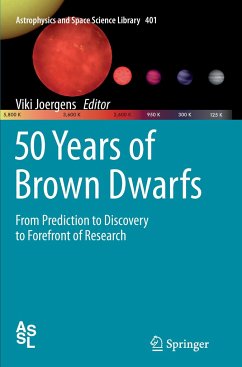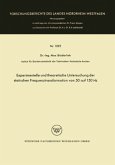The years 2012/2013 mark the 50th anniversary of the theoretical prediction that Brown Dwarfs, i.e. degenerate objects which are just not massive enough to sustain stable hydrogen fusion, exist. Some 20 years after their discovery, how Brown Dwarfs form is still one of the main open questions in the theory of star formation.
In this volume, the pioneers of Brown Dwarf research review the history of the theoretical prediction and the subsequent discovery of Brown Dwarfs. After an introduction, written by Viki Joergens, reviewing Shiv Kumar's theoretical prediction of the existence of brown dwarfs, Takenori Nakano reviews his and Hayashi's calculation of the Hydrogen Burning Minimum Mass. Both predictions happened in the early 1960s. Jill Tarter then writes on the introduction of the term 'Brown Dwarf', before Ben Oppenheimer, Rafael Rebolo and Gibor Basri describe their first discovery of Brown Dwarfs in the 1990s. Lastly, Michael Cushing and Isabelle Baraffe describe the development of the field to the current state of the art.
While the book is mainly aimed at the Brown Dwarf research community, the description of the pioneering period in a scientific field will attract general readers interested in astronomy as well.
In this volume, the pioneers of Brown Dwarf research review the history of the theoretical prediction and the subsequent discovery of Brown Dwarfs. After an introduction, written by Viki Joergens, reviewing Shiv Kumar's theoretical prediction of the existence of brown dwarfs, Takenori Nakano reviews his and Hayashi's calculation of the Hydrogen Burning Minimum Mass. Both predictions happened in the early 1960s. Jill Tarter then writes on the introduction of the term 'Brown Dwarf', before Ben Oppenheimer, Rafael Rebolo and Gibor Basri describe their first discovery of Brown Dwarfs in the 1990s. Lastly, Michael Cushing and Isabelle Baraffe describe the development of the field to the current state of the art.
While the book is mainly aimed at the Brown Dwarf research community, the description of the pioneering period in a scientific field will attract general readers interested in astronomy as well.
From the book reviews:
"Through eight articles and essays ... the book explores the past half-century of brown-dwarf research. ... If you want to read astronomers' reflections on the process of science and see how knowledge accumulates ... across generations, 50 Years of Brown Dwarfs is a good book to pick up. ... 50 Years of Brown Dwarfs would be a solid addition to a science-lover's library, and the authors strive to describe the equations in words and let you follow their steps." (Sarah Scoles, Astronomy Magazine, cs.astronomy.com, December, 2014)
"Through eight articles and essays ... the book explores the past half-century of brown-dwarf research. ... If you want to read astronomers' reflections on the process of science and see how knowledge accumulates ... across generations, 50 Years of Brown Dwarfs is a good book to pick up. ... 50 Years of Brown Dwarfs would be a solid addition to a science-lover's library, and the authors strive to describe the equations in words and let you follow their steps." (Sarah Scoles, Astronomy Magazine, cs.astronomy.com, December, 2014)







